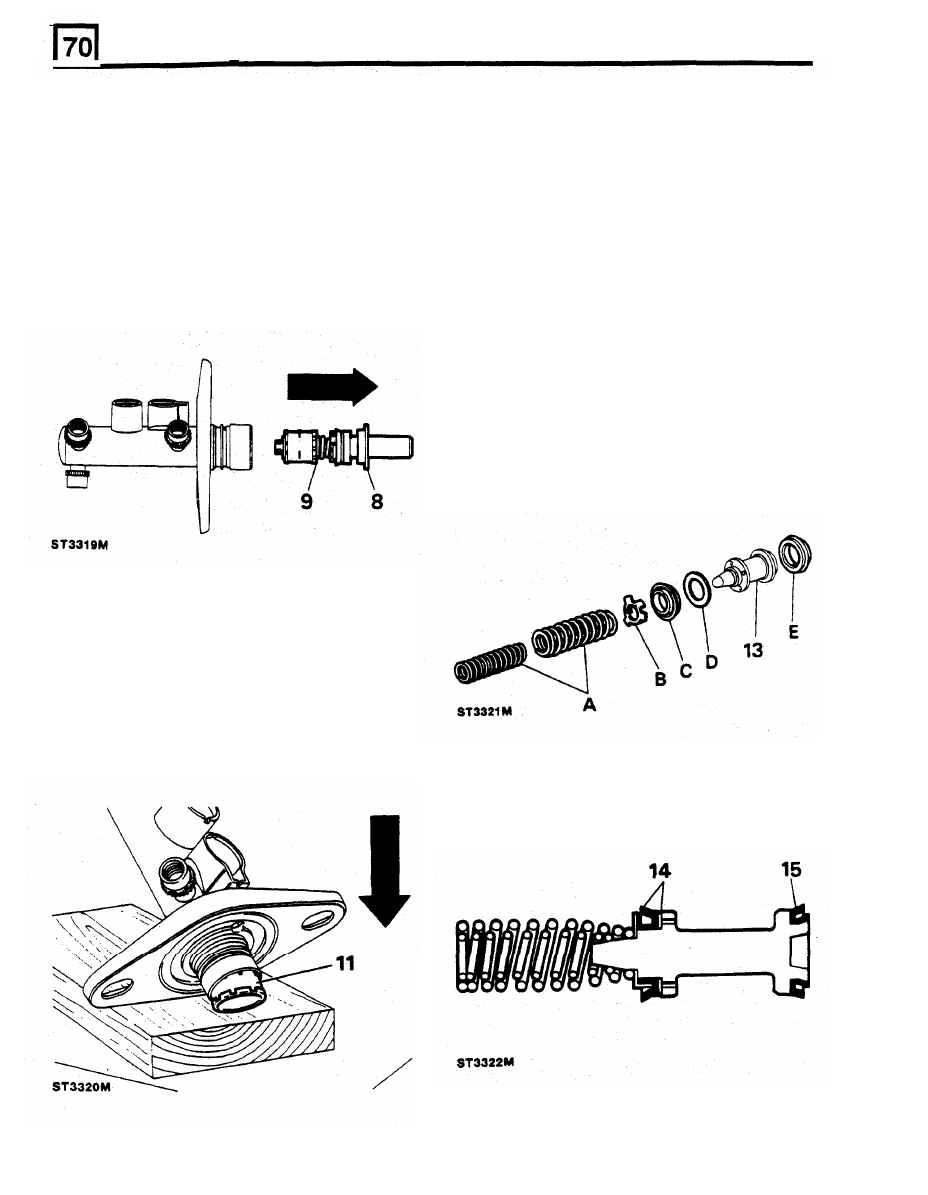Defender (1993+). Manual - part 84

BRAKING
SYSTEM
8. Remove the guide ring from the mouth of the
12.
Clean all parts with Girling cleaning fluid or
master cylinder which supports the primary
unused brake fluid and place the cleaned
plunger assembly and place to one side, this
parts on to a clean sheet of paper. Inspect the
component is not part
of
the master cylinder
cylinder bore and plungers for signs of
service kit and is to be refitted on assembly of
corrosion, ridges and score marks. Provided
the unit.
the working surfaces are in perfect condition,
9. Pull the primary plunger assembly
out
of the
new seals from a Girling Service repair kit
master cylinder.
may be used.
NOTE:
The primary plunger assembly cannot
be
broken down any further and is serviced as a
complete unit. Discard the assembly.
Renewing secondary plunger seals
secondary plunger and discard:
13.
Remove the following components from the
NOTE: A
small screwdriver with the end rounded
and polished is required to remove the
'L'
seal.
DO
NOT
damage the secondary plunger.
A.
Springs
B. Seal retainer
C.
Recuperating seal (primary cup)
D.
Washer
E. 'L'
seal
10.
The secondary plunger assembly will remain
at the bottom of the master cylinder bore, the
plunger can be easily expelled by tapping the
assembly on
a
piece
of
timber until the
plunger appears at the cylinder mouth,
carefully pull the plunger
out
of the master
cylinder.
11.
If
the swirl tube was not expelled at the same
time as the secondary plunger, repeat the
above operation
to
expel it from the bottom of
the master cylinder bore and discard.
14.
Coat the new seals in unused brake fluid and
firstly fit the 'L' seal to the plunger.
15.
Fit the washer followed by the recuperating
seal. Fit the seal retainer and springs, ensure
the springs are correctly seated.